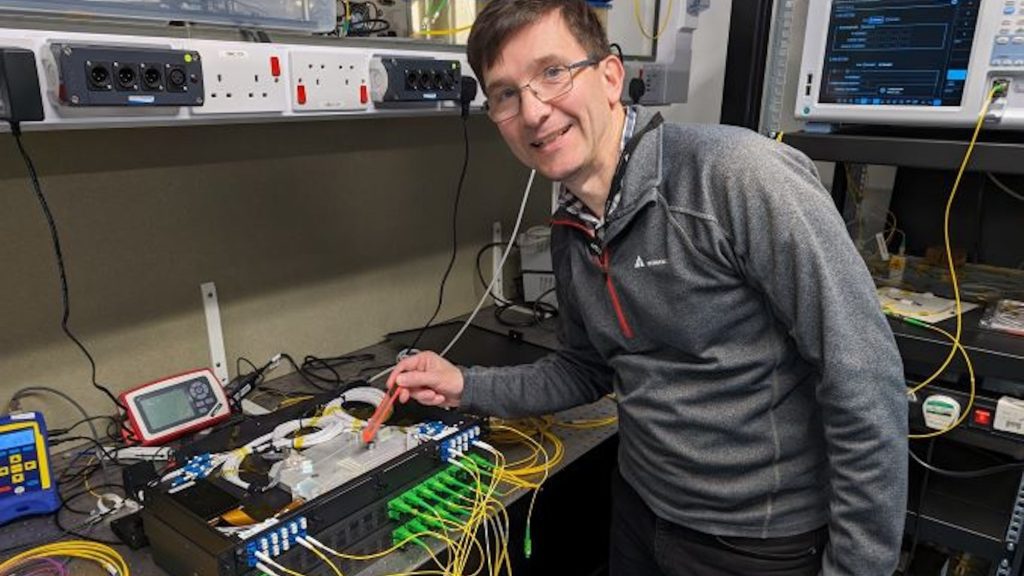In the typical American household, any download speed over roughly 242 Mbs is considered a very fast broadband internet connection . This is quite good, but over in the UK, scientists at Aston University have achieved about 1.2 times that speed by using a single fiber optic cable, setting a new record for specific wavelength bands.. That's pretty decent, but researchers at UK's Aston University recently managed to reach about 1.2 times that speed using a single fiber optic cable—a new record for specific wavelength bands. million —a new record for specific wavelength bands. —a new record for specific wavelength bands.—a new record for specific wavelength bands.
As reported today by Gizmodo, the international team achieved a data transfer rate of 301 terabits, or 301,000,000 megabits per second by accessing new wavelength bands normally unreachable in existing optical fibers—the tiny, hollow glass strands that carry data through beams of light. According to Aston University’s recent profile, you can think of these different wavelength bands as different colors of light shooting through a (largely) standard cable.
[Related: No, ‘10G internet’ is not a thing.]
Current fiber cabling uses C- and L-bands to transmit data. However, by building an optical processor, researchers managed to access the never-before-used E- and S-bands.
“In the last few years, Aston University has been developing optical amplifiers that work in the E-band, which is adjacent to the C-band in the electromagnetic spectrum but is about three times wider,” said Ian Phillips, the optical processor’s creator, in a statement .“Before the development of our device, no one had been able to properly emulate the E-band channels in a controlled way.”
But in terms of new technology, the processor was essentially the main focus of the team's experiment. “In general, data was sent via an optical fiber like a home or office internet connection,” Phillips added.
What’s particularly impressive and promising about the team’s achievement is that they didn’t need new, high-tech fiber optic lines to reach such fast speeds. Most existing optical cables have always technically been capable of reaching E- and S-bands, but lacked the equipment infrastructure to do so. With further refinement and scaling, internet providers could increase standard speeds without overhauling current fiber optic infrastructures.
[Related: An inside look at how fiber optic glass is made.]
“[It] makes greater use of the existing deployed fiber network, increasing its capacity to carry data and prolonging its useful life & commercial value,” said Wladek Forysiak, a professor at the Aston Institute of Photonic Technologies. In doing so, Forsyiak believes their solution may also offer a much greener solution to the world’s rapidly increasing data demands.









